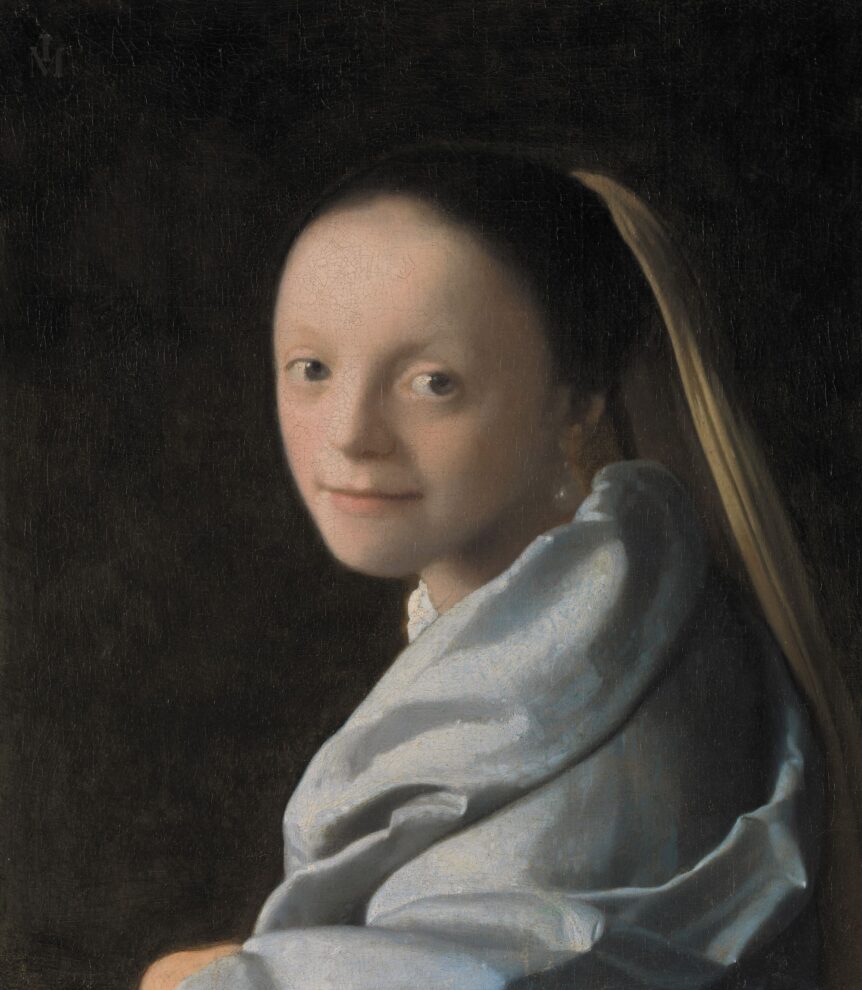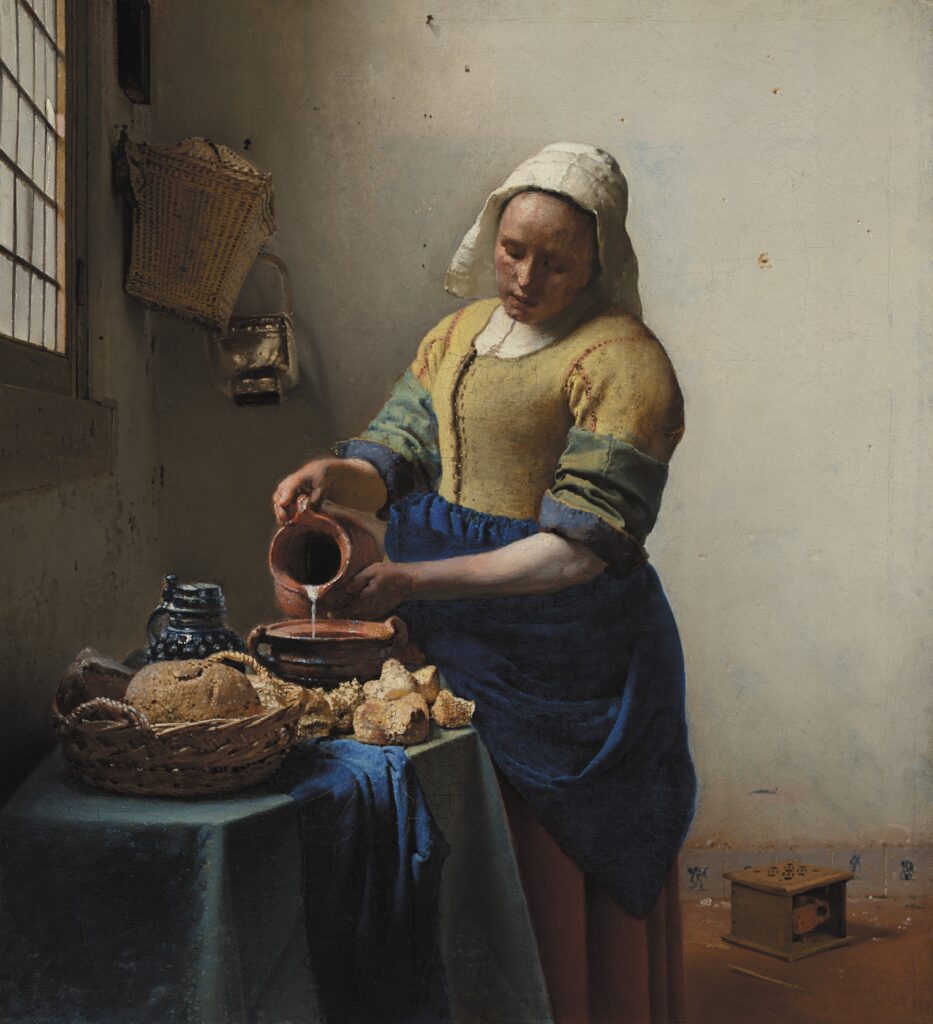
Of all great painters, few are as fundamentally unknowable, on the basis of their work, as Johannes Vermeer. Not for nothing was he described by Théophile Thoré-Bürger—the nineteenth-century critic who did so much to promote him—as the Sphinx of Delft. Now the subject of a major new show at the Rijksmuseum in Amsterdam, his pictorial voice is one that we do not so much hear as overhear. But even to say that much is to suggest that some form of intended discourse is taking place in his work, and that too is uncertain.
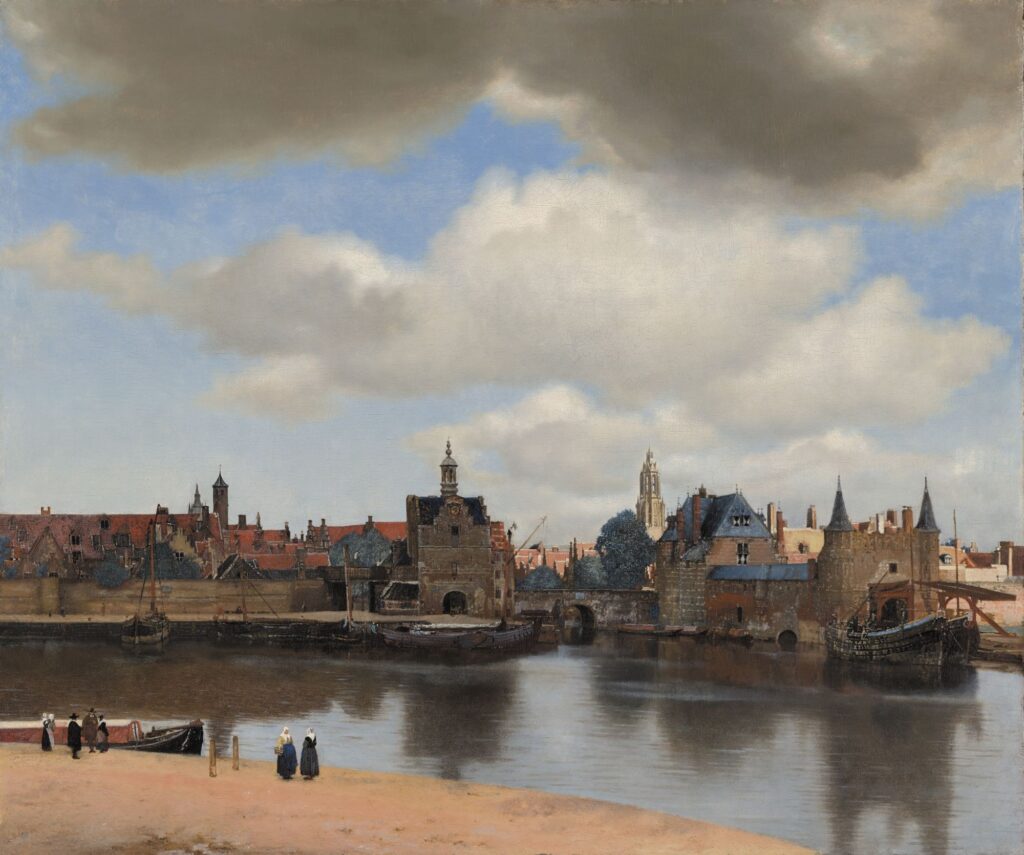
Largely through the labors of the late John Michael Montias, an art historian who combed the archives of Delft for any information on Vermeer, we have learned much about the artist, his wife, his mother-in-law, and the fifteen children he sired. We see him moving about the city of his birth, running a tavern and trading in art, driving his multitudinous family into insolvency through an extravagant love of the costly pigment ultramarine. We know that he was in Delft when a munitions depot exploded in 1654, destroying half the city, and we know that he struggled to survive the lean years following Louis XIV’s invasion of the Netherlands in 1672. But neither these facts, nor the paintings he left behind, tell us much worth knowing about the man who made them. Furthermore, Vermeer does not appear to have produced a single drawing, which might otherwise offer some insight into the character of an artist who remains hidden behind the scrupulous discipline of his finished work. And while it is generally true that most of the Dutch masters—Rembrandt, Hals, and Gerrit Dou, for example—were more reserved than their Italian counterparts, they still manage, through the aggregate effect of their art, to emerge as vibrant, living presences. Vermeer does not.
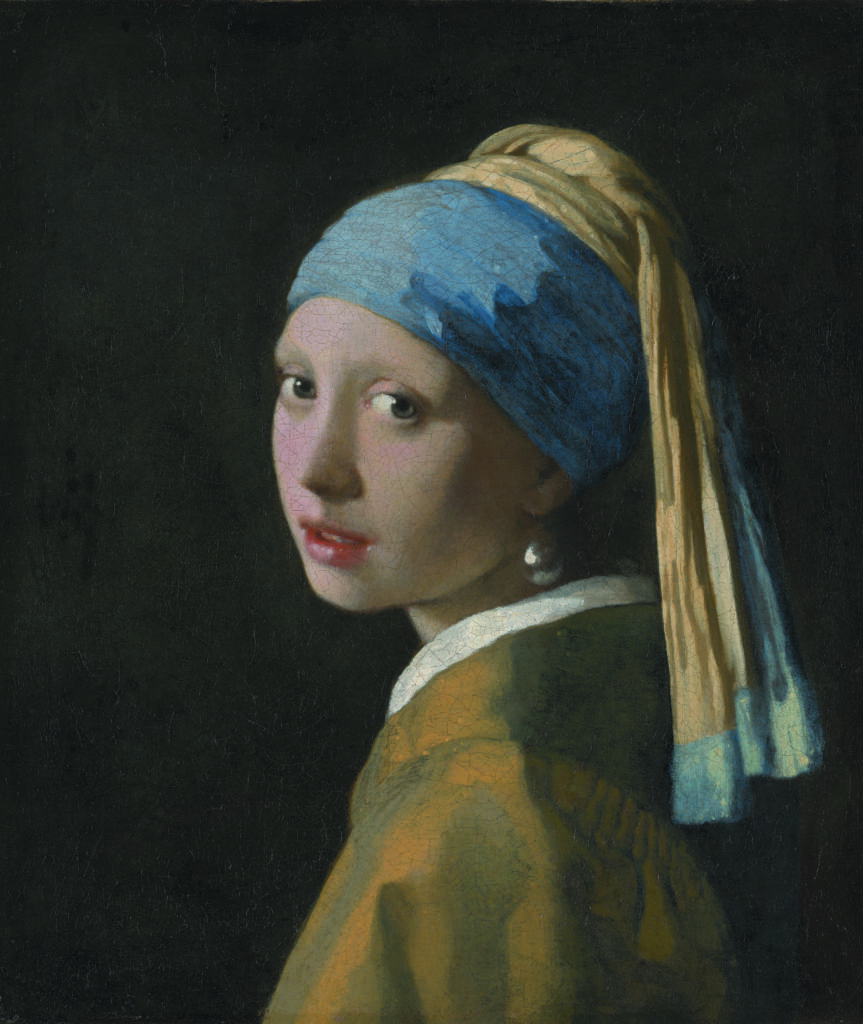
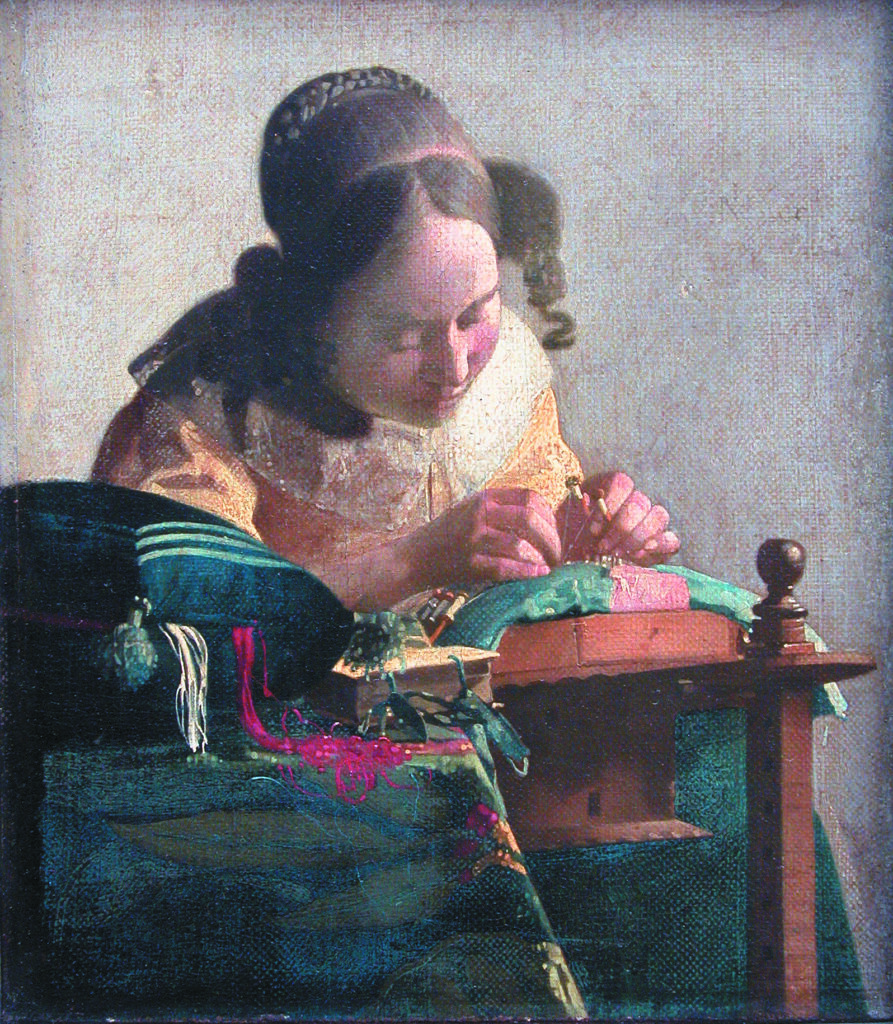
Some scholars have given as a cause of Vermeer’s prolonged anonymity, even in his own lifetime, that he painted very slowly, averaging no more than three works a year; and that many of these works were sold to a single patron of Delft, Pieter van Ruijven. For generations the paintings remained in van Ruijven’s house, known to few beyond his direct descendants. And yet it seems that, whenever the public actually saw one of Vermeer’s works—as when the Mauritshuis in The Hague purchased and displayed View of Delft in 1822—they immediately admired its excellence and wished to see more (Fig. 2).
Most of the Dutch masters were more reserved than their Italian counterparts, but they still manage to seem, through the aggregate effect of their art, to emerge as vibrant, living presences. Vermeer does not
But that wish went unanswered until the middle years of the nineteenth century, when, independently of one another, two committed art critics, Thoré-Bürger and Gustav Friedrich Waagen, hunted down every work by the artist they could find. Although Thoré-Bürger came up with a list of some seventy paintings that he believed to be by Vermeer, modern scholarship—itself provisional and approximate—has winnowed the canon down to thirty-five, several of which are contested. From this meager output, produced between 1654 and the artist’s death in 1675, at the age of forty-two, an astonishing twenty-eight works, or 80 percent, are now on view in the Rijksmuseum.
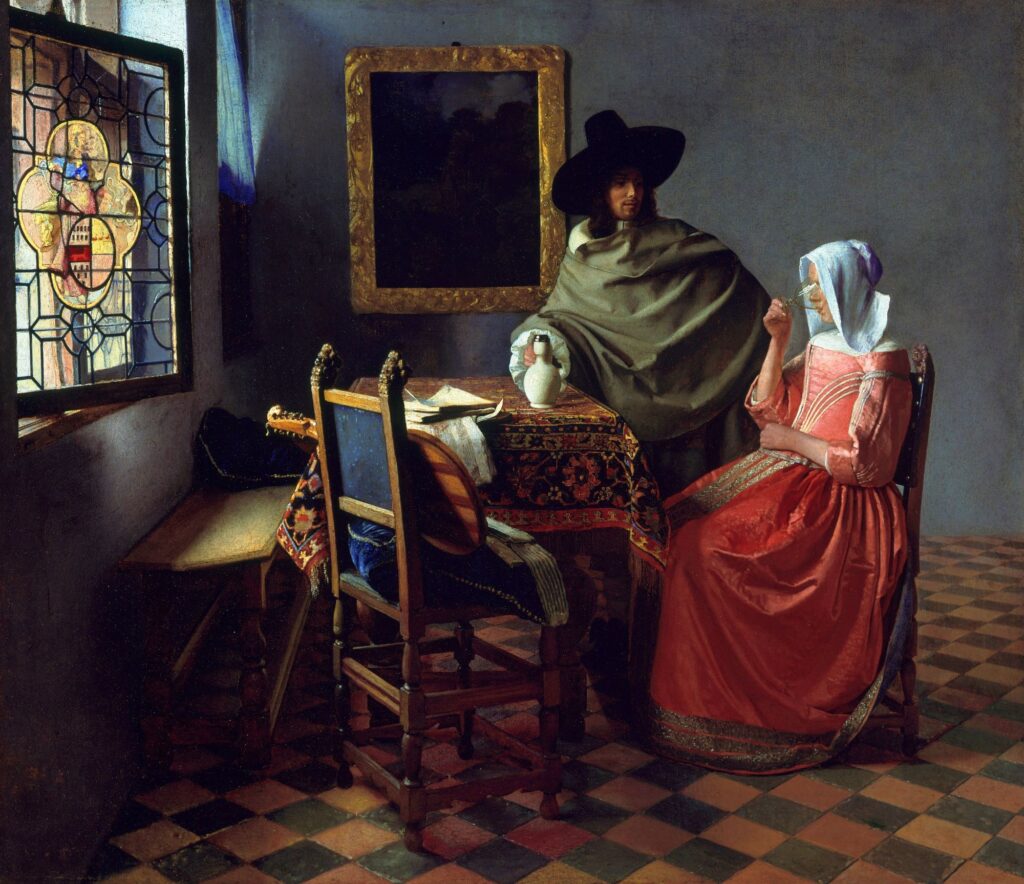
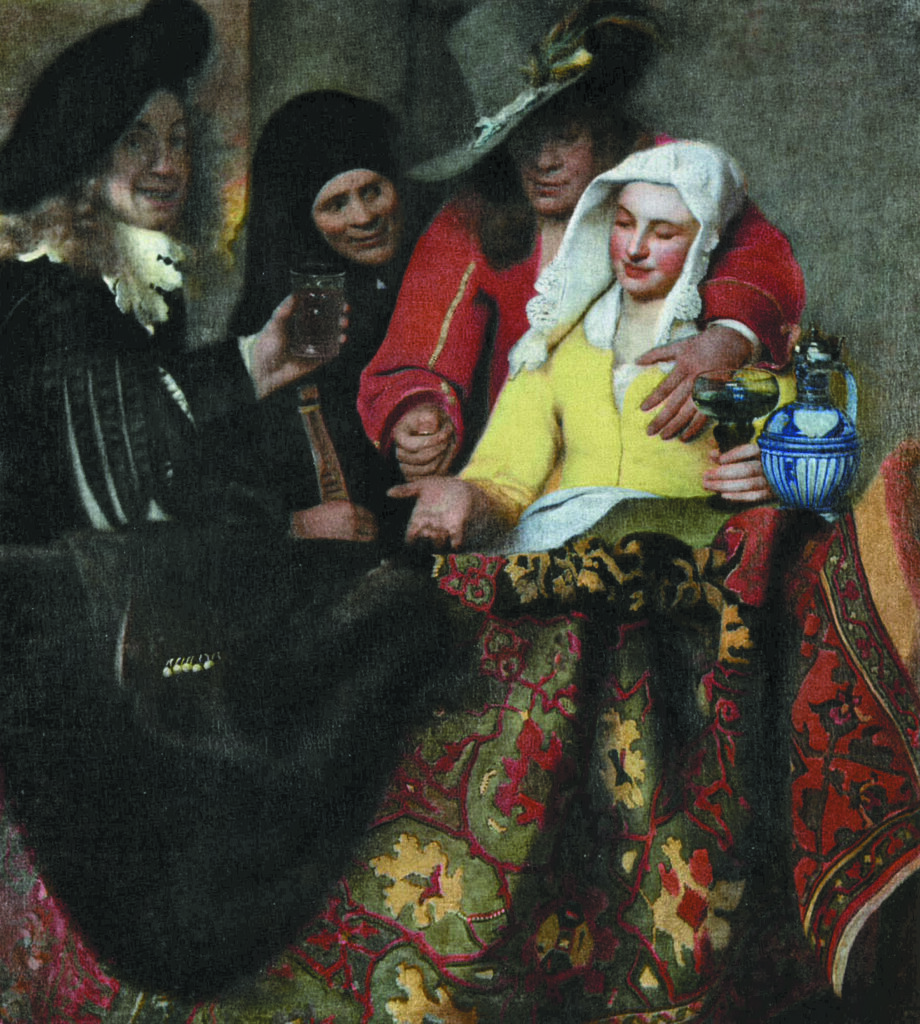
Regarding Vermeer’s artistic beginnings and who his teachers were, we can only speculate: we know nothing beyond what is suggested by the works themselves. The artist he most resembles—most of the time—is Gerard ter Borch, thirteen years his senior, who shared his predilection for depicting interior scenes in which solitary women are writing letters. In a work like The Glass of Wine (Fig. 5) Vermeer comes closest to Ter Borch. But the differences between these two artists, despite certain thematic similarities, is instructive. There is a somber moodiness to Ter Borch’s almost monochrome palette of brown, green, and gray that contrasts markedly with the chromatic brilliance of Vermeer’s Girl with a Pearl Earring (Fig. 3), or The Lacemaker (Fig. 4), or The Milkmaid (Fig. 1), in which the artist has made thoroughly his own a certain combination of yellow and blue emerging from a darkened ground. And whereas Ter Borch’s women are distinguished by refined feeling and uncommon psychological penetration, Vermeer’s remain inscrutable, revealing nothing of their inner lives. They live, it would seem, to merge with the furniture and the filtered light and so to form an indivisible totality of stunning beauty. They almost share the status of “staffage”—those small, disposable, beside-the-point human forms that populate Old Master landscapes—except that, in Vermeer, they are born of the most refined observation.
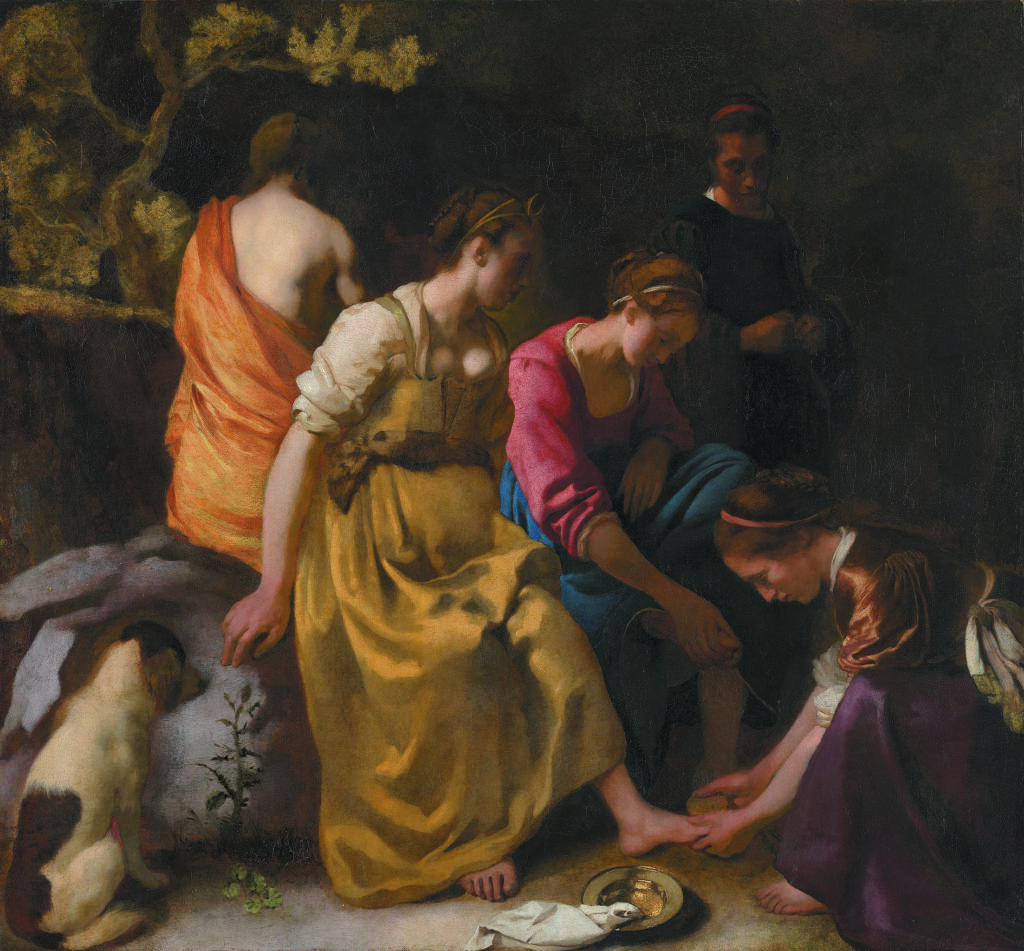
It is interesting, however, that Vermeer did not arrive automatically at the terms that most define his art. He never became the painter he originally thought he was or hoped to be. Just as many an actor dreams of being a leading man before the world informs him that he is really a character actor, so many Old Masters—Vermeer among them—began their careers aspiring to be a history painter, the most prestigious and profitable sort of artist in the eyes of the seventeenth century. In Diana and Her Nymphs (Fig. 7) and Jesus in the House of Mary and Martha (Fig. 9), both from around 1654, we find the twenty-two-year-old artist swinging for the fences. Unlike the diminutive works for which he is most admired today, these Biblical and mythological scenes present nearly life-sized figures that share little with Vermeer’s more famous works beyond a curious chromatic brightness and an oddly persistent emotional disengagement. They are quite good, especially Diana and Her Nymphs, but they represent a path that Vermeer would soon abandon.
Instead of depicting histories in the grand manner, Vermeer became a genre painter, a decidedly second-tier occupation in the eyes of his contemporaries. These scenes of anonymous—generic—figures drawn from everyday life were largely invented in Holland in the seventeenth century and seem to correspond to that nation’s middle-class ethos, so different from the aristocratic, classicizing mood that predominated in Italy and France. A transitional work in Vermeer’s evolution is The Procuress of 1656 (Fig. 6). In size it resembles the images of Diana and Jesus, but it depicts common, even base, characters. And yet it is not quite generic: there is no other work by the artist that reveals this degree of expression or individuation, whether in the red-coated man who gropes the young woman on the right, or in the two leering men beside him, of whom the one on the far left has been seen as a self-portrait. In terms of his future evolution, this appears to be the work in which Vermeer introduces that signature combination of yellow and blue emerging from a darkened ground.
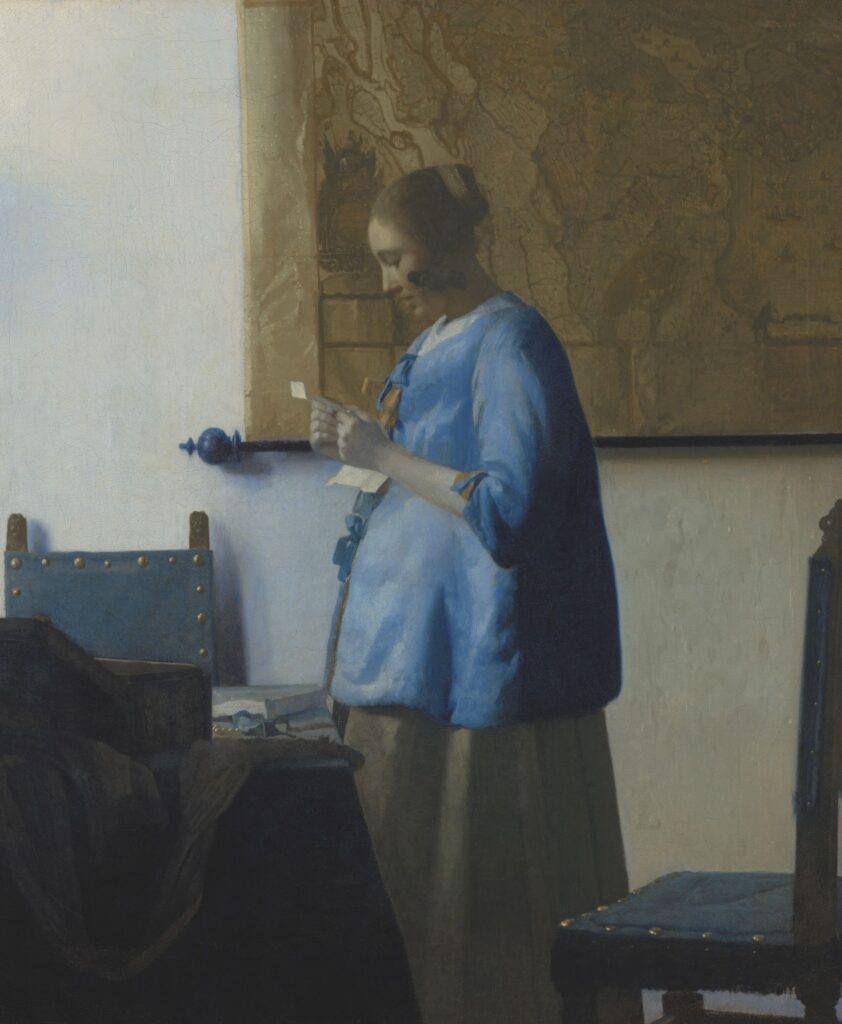
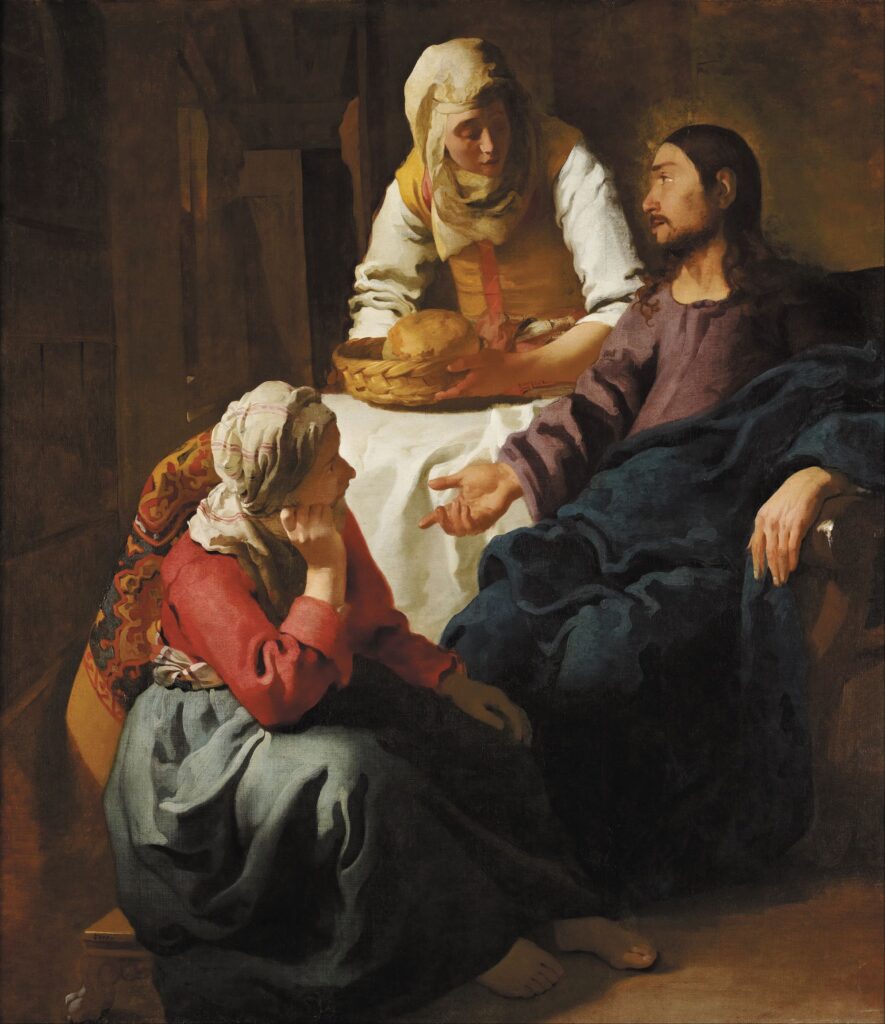
Given the general absence of character or affect in the works of Vermeer, what is most striking and important about them—beyond their sheer gorgeousness—is how consistently unparalleled and unprecedented they are: nothing looks like a Vermeer except another Vermeer. And even there one finds great variations, from the isolated heads of Girl With a Pearl Earring and the Study of a Young Woman (Fig. 10) in the Metropolitan Museum to the interior scenes of Woman Reading a Letter (Fig. 8) and Woman Holding a Balance (Fig. 11).
Although it is true that Vermeer worked in the general context of those genre scenes that defined the so-called school of Delft, his paintings look instantly different from those of Ter Borch, or Pieter de Hooch, or Gabriel Metsu. Even though his Jesus and Diana are clearly related to mainstream European art of the seventeenth century, neither of these paintings looks quite like the work of any other master. Vermeer obviously knew a great deal about his contemporaries and forebears—he was, after all, a dealer as well as an artist. But he seems to have learned little from any of them beyond the most basic context in which his art could exist. Other than those perfunctory guidelines, Vermeer paints like a genius who had never seen a single painting before he created his own.
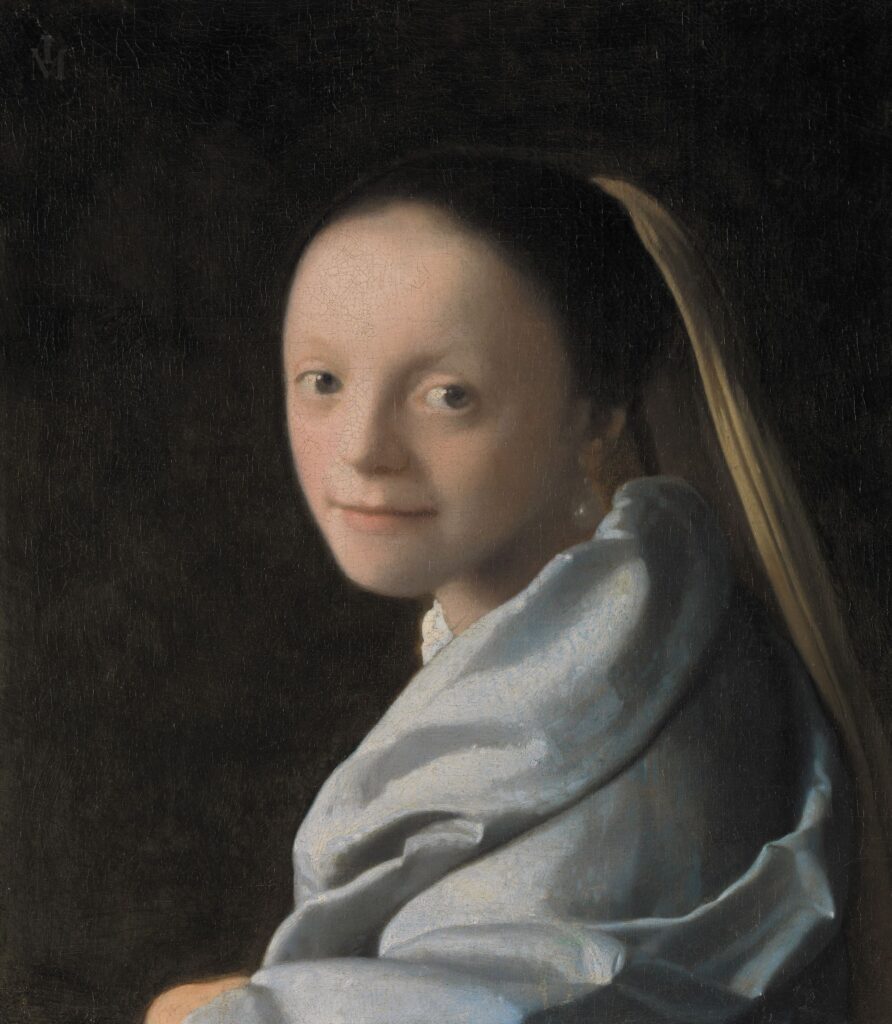
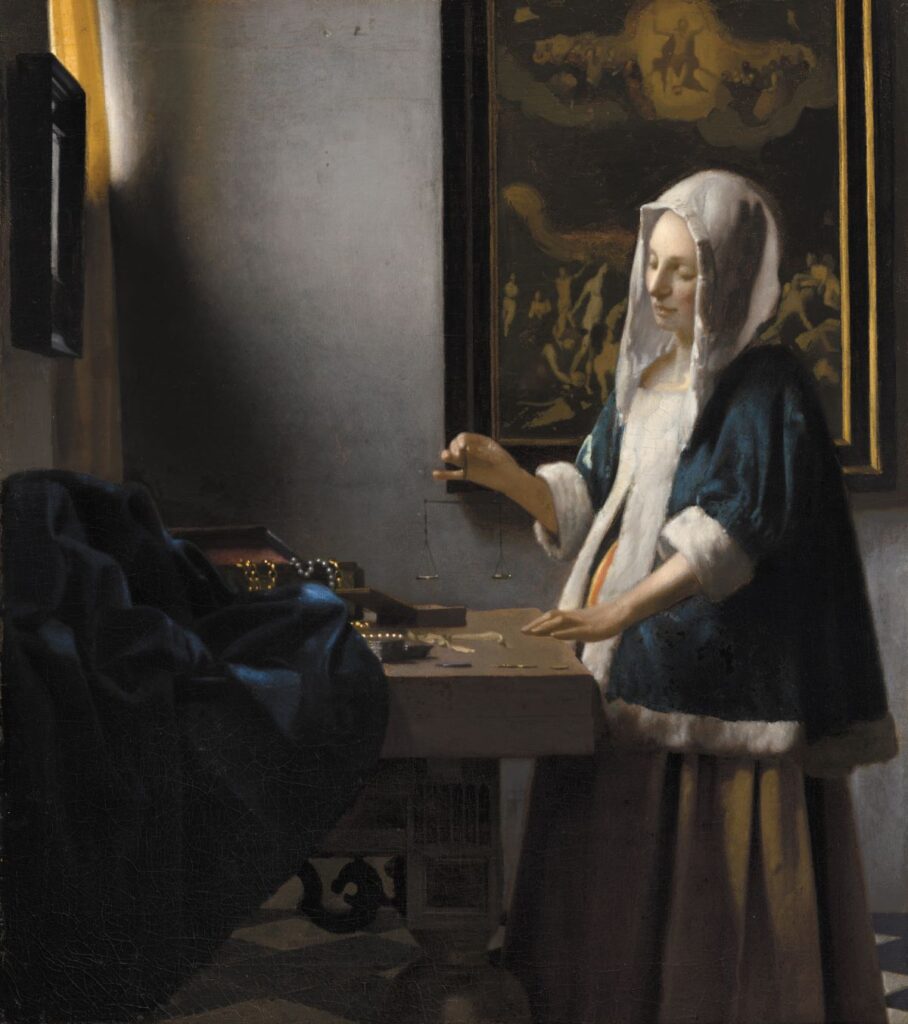
Vermeer is on view at the Rijksmuseum in Amsterdam to June 4.

